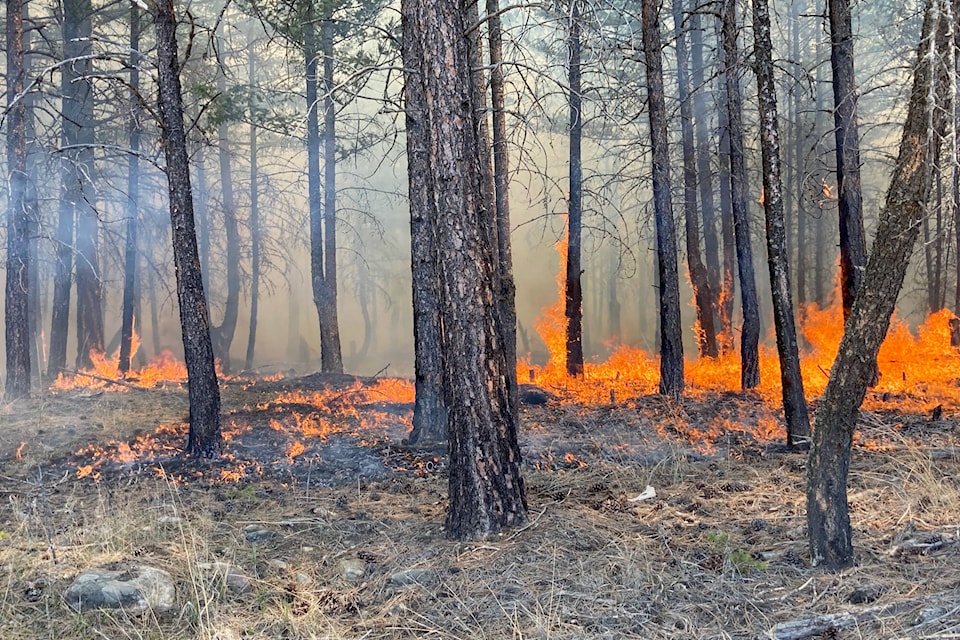While fire bans are already being implemented in other areas of the province, conditions in the Kootenays don’t yet merit similar restrictions, according to the Southeast Fire Centre.
Both the Cariboo Fire Centre and the Prince George Fire Centre are banning open burning — Category 2 and Category 3 fires — effective Wednesday, March 28. Campfires are not impacted by the open burning ban.
“Multiple factors are taken into consideration when assessing thresholds and deciding whether to implement open burning prohibitions,” said Kim Wright, a fire information officer with the Southeast Fire Centre, in an email.
“We have not reached these thresholds regionally and given both current and forecasted weather conditions, we are not expecting to reach these thresholds in the immediate future. We are always monitoring these factors and open burning prohibitions can be implemented fairly rapidly once these thresholds are met.”
While active wildfires have already sparked up in other areas of the province this year, there haven’t been any in the Southeast Fire Centre so far in 2024.
The BC Wildfire Service notes a number of holdover fires that smouldered beneath the winter snow cover from large fires that began in the 2023 season, but there are none in the Southeast Fire Centre.
The province recently released the 2024 seasonal outlook, which noted a high potential for an active spring wildfire season, once fuels and forests are snow-free.
Much of the long-range forecasting is informed by the BC River Forecast Centre and the snowpack data, which reported that the province’s snowpack was 61 per cent of normal as of March 1. The low snowpack will limit surface runoff, stream flows, and fuel moisture recharge that could limit drought recovery into summer, according to the province.
For the East Kootenay context, the snowpack recovered from a dire 62 per cent of normal in January, to 81 per cent of normal by March 1, following accumulation of snow in the following months.
While it’s impossible to fully predict or forecast how intense any given wildfire season might look like in the Kootenays, there are historical weather trends to keep an eye on, according to Wright.
“May and June are typically the rainiest months in the B.C. Interior (including the Southeast region),” Wright said. “The amount and duration of rain events during this period influences the length and intensity of the core wildfire season. It is too early to tell what to expect for wildfire activity as long-range weather forecasts, especially for precipitation, are unreliable.”
Prevention is an integral part of preparing for wildfires, with prescribed burning becoming an invaluable element to fending off high-intensity wildfires.
An example of the benefits of prescribed burning was the 1,200 hectare prescribed burn out in the ʔaq’am community last spring. That treatment prevented the St. Marys River wildfire — which began in the middle of July — from spreading high-intensity wildfire into that previously treated area and further into community lands, which helped BC Wildfire Service with planning and tasking resources to other more fire-intense areas of the wildfire.
The Southeast Fire Centre has 17 prescribed burns scheduled this spring, according to Wright.
“While not all of these burns will get the burn window required to achieve objectives, our regional prescribed fire program is robust and seven of those burns are planned for the East Kootenay,” Wright said.
In terms of wildfire suppression resources, the Cranbrook Fire Zone is staffed with five initial attack crews — a crew of four personnel — and two unit crews, which include 22 members per unit. Additionally, the Cranbrook Fire Zone also has 13 staff members that include officers and support staff.
